3 Tips To Know Mooring Chock
Mooring chocks are used to secure mooring lines, which are used to anchor or dock a vessel to a berth, jetty, or other mooring points, and distribute the load from the mooring lines, preventing excessive stress or damage to the ship’s structure. They are used for docking, anchoring, and fastening vessels during loading and unloading activities.
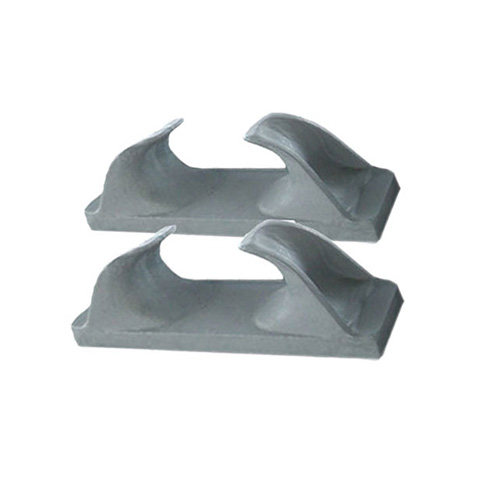
Material Selection For Mooring Chock
The materials used to make marine mooring chocks must be chosen carefully to ensure their longevity, strength, and resistance to corrosion and wear in the hostile marine environment.
Factors are considered when choosing materials for mooring chocks
Load Bearing Capacity and Strength
Mooring chocks are subject to high weights and forces from mooring lines, which vary according to vessel size and type, as well as environmental circumstances. As a result, mooring chocks are frequently made of materials with high tensile strength and load-bearing capability, such as steel, to ensure that they can endure the applied loads without distortion or failure.
Corrosion Protection
Because of the presence of saltwater, marine environments are very corrosive, causing metals to corrode quickly. To ensure long-term performance and durability, materials with superior corrosion resistance, such as stainless steel, bronze, or high-quality composites, are often utilized for mooring chocks.
Wear Resistance
Mooring chocks may wear due to friction with mooring lines, resulting in surface damage or erosion over time. Materials with high wear resistance, such as hardened steel or long-lasting composites, are frequently used to reduce wear and extend the life of mooring chocks.
Weight and Density
The weight and density of the materials used for mooring chocks can have an effect on the vessel’s total weight and stability. Low density materials, such as aluminium or some composites, can be utilised to reduce the weight of mooring chocks without sacrificing strength or longevity.
Cost
Material selection for mooring chocks is also influenced by cost. While stainless steel and bronze are extremely robust and corrosion-resistant, they might be more expensive than other materials. As a result, while selecting materials, a balance of performance, durability, and cost must be addressed.
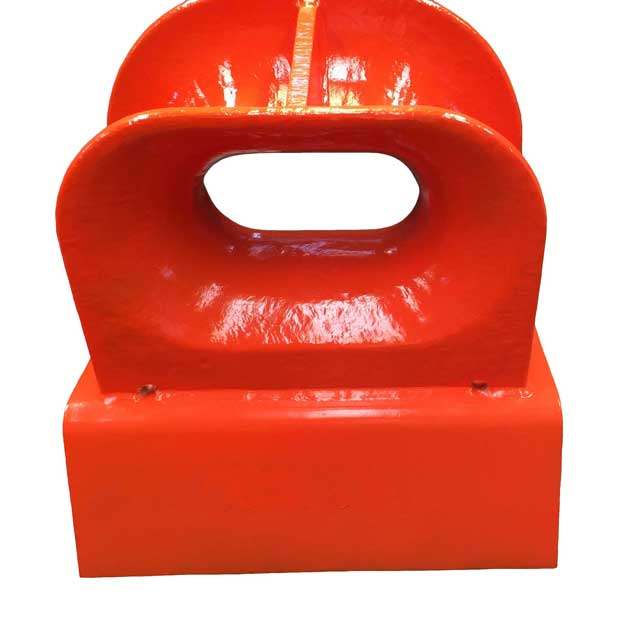
Common materials used for mooring chocks
Steel
Because of its excellent strength, load-bearing capability, and durability, steel is a popular material for mooring chocks. Depending on the application and environmental conditions, it can be employed in mild steel, high-tensile steel, or stainless steel.
Bronze
Bronze is a corrosion-resistant material widely utilised in nautical applications such as mooring chocks. It has great strength, wear resistance, and longevity, making it ideal for mooring chocks that require high performance and corrosion resistance.
Composites
Composite materials, such as fibreglass reinforced plastic (FRP) or carbon fibre reinforced plastic (CFRP), are lightweight, corrosion-resistant, and have a high strength-to-weight ratio. Because of their superior performance, they are increasingly being used in marine applications such as mooring chocks.
Aluminum
Aluminum is a lightweight material with moderate strength and corrosion resistance. It is widely used for mooring chocks on tiny boats or lightweight vessels when weight reduction is a goal.
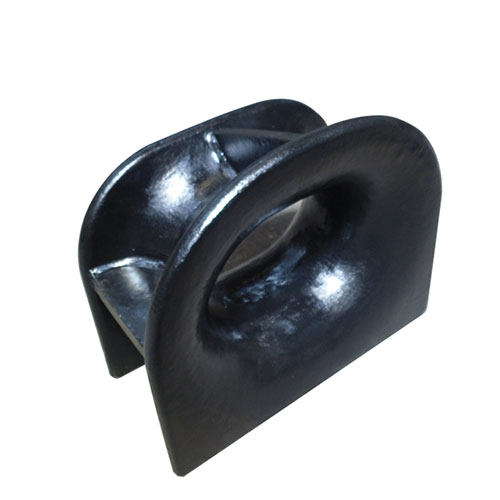
Structural Components And Features Of Mooring Chock
To ensure optimum performance of marine mooring chocks, they are often made up of many structural components and have certain design aspects.
Chock Body
The primary body of the mooring chock is often a strong metal or composite construction that serves as the chock’s main framework. It could be shaped like a U or V, with smooth, rounded sides to protect the mooring lines. The chock body is designed to bear mooring line loads and distribute them equally to the vessel’s structure.
Mounting Base
A mounting base or flange is often used to secure the mooring chock to the vessel’s deck or hull. The mounting base is intended to securely attach the mooring chock to the framework of the vessel, providing stability and strength during mooring operations.
Fairlead
A fairlead is a guiding feature in the chock body that aids in the direction and guidance of the mooring lines as they pass through the chock. It keeps mooring lines from rubbing on the chock body, reducing line wear and tear and maintaining smooth movement during mooring operations.
Rollers or Sheaves
Some mooring chocks include rollers or sheaves built into the chock body. These are intended to reduce friction on the mooring lines as they pass through the chock, reducing line wear and tear and facilitating smooth movement.
Bolts or Fasteners
Bolts or fasteners are often used to secure marine mooring chocks to the vessel’s frame. These bolts or fasteners are strong and corrosion-resistant in order to keep the mooring chock securely fastened to the vessel during mooring operations.
Drainage Holes
Mooring chocks may also have drainage holes or channels to allow water to drain away from the chock, eliminating water accumulation and lowering corrosion risk.
Corrosion Protection
To avoid corrosion from the severe marine environment, particularly saltwater exposure, marine mooring chocks are frequently constructed with corrosion protection techniques, such as coatings or plating.
Load Ratings and Markings
Load ratings or signs indicating maximum load-bearing capability are commonly found on mooring chocks. This information ensures that the chocks are used within their design limits and serves as a guide for safe mooring operations.
Proper Orientation and Placement
To ensure effective function, marine mooring chocks are often constructed with certain orientation and location requirements. They are frequently fitted in key areas throughout the vessel to guarantee optimal force distribution and safe and effective mooring operations.
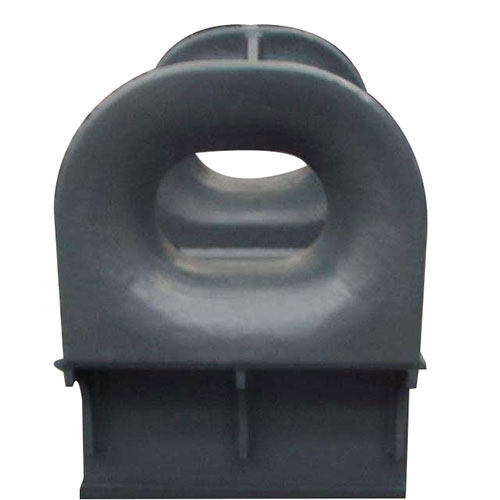
Innovations Of Mooring Chocks
Materials, technology, and designs for mooring chocks have been continuously improved to improve performance, longevity, and safety.
Composite Materials
Metals such as steel or cast iron are commonly used in traditional marine mooring chocks. However, composite materials are increasingly being used in maritime mooring chocks, which provide benefits such as high strength-to-weight ratio, corrosion resistance, and decreased maintenance requirements. Composite materials, such as fibreglass-reinforced polymers (FRP), are utilised in the manufacture of chock bodies, rollers, and fairleads, providing better durability and service life.
Non-metallic Coatings
Coating technology advancements have resulted in the creation of non-metallic coatings for marine mooring chocks, which provide greater corrosion resistance, reduced friction, and increased longevity. These coatings may include specialized polymer coatings, epoxy coatings, or other corrosion-resistant coatings that assist mooring chocks last longer and require less maintenance.
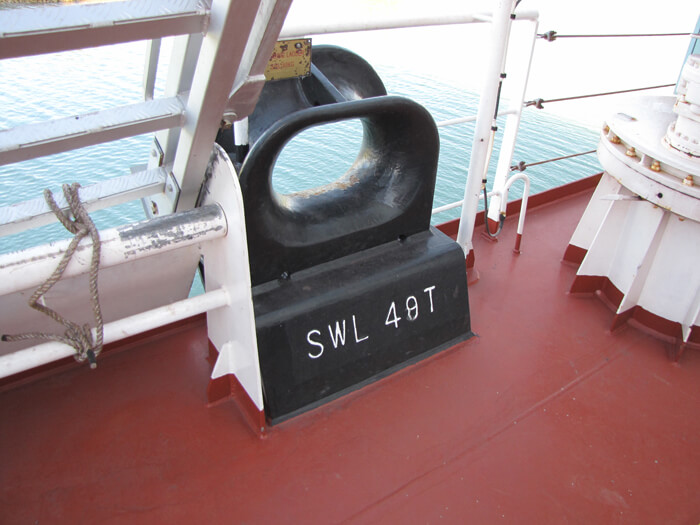
3D Printing
Additive manufacturing, often known as 3D printing, is rapidly being employed in the manufacture of marine mooring chocks. Because 3D printing allows for complicated geometry and customization, mooring chocks with optimised designs and increased performance can be produced. By minimizing material waste and energy usage, 3D printing has the potential to enable more sustainable manufacturing processes.
Integrated Load Monitoring
Some marine mooring chocks now include integrated load monitoring devices, such as load cells or strain gauges, which allow for real-time monitoring of the loads applied to the chock. This increases safety by providing feedback on the real loads encountered by the chock during mooring operations, allowing for preventative repair and preventing overloading.
Design Optimization
Computer-aided design (CAD) and finite element analysis (FEA) advancements have allowed for optimised designs for maritime mooring chocks. Computational simulations can be used to predict and analyse the performance of mooring chocks under various loads and environmental circumstances, resulting in superior designs with more strength, better load distribution, and lower stress concentrations.
Environmentally-friendly Designs
Marine mooring chock design innovations also emphasize environmental sustainability. Some mooring chocks, for example, are built with rounded curves and smooth surfaces to reduce the likelihood of marine animal entanglement and hence the impact on marine ecosystems.
Summary
Marine mooring chocks are used to keep ships in place at docks or wharves. Material selection is critical to ensuring that mooring chocks provide dependable and long-lasting performance in securing mooring lines. Mooring chock developments that aim to increase performance, safety, and sustainability in the maritime industry.


